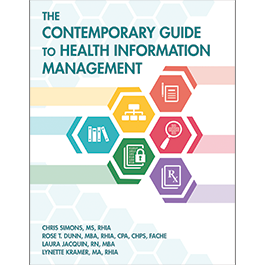Book excerpt: Who should be involved with denial avoidance?

Health Information Management
Like a well-oiled machine, each component—or revenue cycle department—must function optimally to perform at its peak. Therefore, denial avoidance is a cross-functional, ongoing initiative. The departments with the most involvement are typically patient access, care management, patient financial services, HIM, CDI, and various clinical stakeholders.
Denial management and avoidance programs require full commitment and support from the entire organization. Consider the following keys to a successful program:
- A culture of continual improvement
- An assigned point person for program oversight and denial research
- Keeping abreast of new regulation
- Ongoing monitoring, trending, and reporting
- Openness and willingness to change
- Support from leadership
- Timely communication and feedback
How can you achieve the benefits of denial avoidance? Identify quick hits and improvement opportunities that can be implemented within 30 days.
Reports and measures will help you focus the program and demonstrate results. Begin tracking and trending denial data, develop baseline metrics, and select key performance indicators.
The steering committee should use monitoring tools to reinforce accountability, performance issues, and trends. Senior executives should be kept in the loop and informed of the findings.
The committee should provide oversight and accountability for performance improvement by using a standardized approach. For example, when a denial category (e.g., coding rejection) exceeds a performance threshold, a research team or work group could be formed. A member of the steering committee acts as the work group leader. The work group designs and implements an action plan to address controllable denials. Then the work group leader updates the steering committee regarding the progress of the investigation until the performance threshold is met or the issue is resolved to the organization’s satisfaction. The steering committee will also advise work groups when to collaborate with other areas or departments to resolve high-priority issues.
The steering committee is responsible for acting on requests for changes in denial management reporting. The committee will need to weigh the costs and benefits associated with the request and all long-term reporting implications.
The committee should consider developing and using the following tools in its analysis and ongoing efforts:
- Executive denial scorecard
- Measures initial, root cause, and final denial (number and dollar amount) per month
- Identifies the department that is responsible for the denial
- Compares current-month metric to previous-month metric
- Quantifies recovery rate and write-off rate (measures appeal outcomes)
- Trending reports
- Measures initial, root cause, and final denial (number and dollar amount) per month
- Identifies the department that is responsible for the denial
- Drills down by patient type, denial category, department, carrier, financial class, DRG, CPT® code, physician, account age, etc.
- Key performance indicator report
- Measures key processes that have an active role in denial avoidance
Editor’s note: This article originally appeared in Revenue Cycle Advisor and is an excerpt from The Contemporary Guide to Health Information Management.
